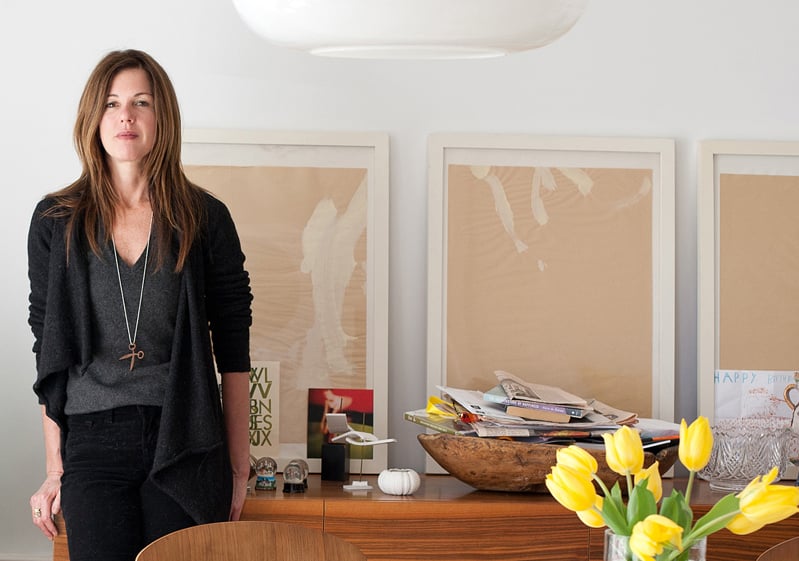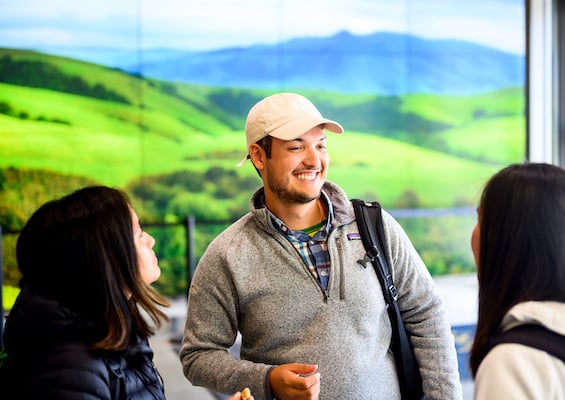Martha Davis, EMBA 17, had already launched several businesses before coming back for an MBA. Her entrepreneurial instincts were finely tuned, and she had a track record of launching successful start-ups. But she felt that she needed hard business skills—specifically, finance and investing knowledge—to grow a business with scale.

“I just didn’t have the confidence to take on capital and investment at this scale and to really cross over into the grown-up business model,” she said. “I finally decided, I need a proper education.”
Early in her career, Davis found her sweet spot at the intersection of fine art and technology. While pursuing a degree in sculpture, she discovered a career path that tapped her creativity as well as her affinity for technical problem solving.
“I fell in love with industrial design,” Martha says. “It’s problem-solving using three-dimensional form.”
Her first job was at Smart Design, a New York-based industrial design consultancy, where she helped clients identify user interface problems and develop concepts to solve them. “That, in and of itself, is a microcosm of starting a business,” says Martha. “It’s solving problems and developing products to fill user needs,” she says. “That trajectory is really entrepreneurial. You have to take a lot of risks.”
It wasn’t long before she started her own business. One of the few female industrial designers in the industry, she founded Able Design to serve the niche of women’s health and pharmaceuticals.
After Razorfish bought her company in 1998 she stayed on, growing it from 200 to 2,000 employees. Then the dot-com bust happened. “I found myself without work,” she says. “I bounced around, did a lot of strategy, but no real design work. I had a come-to-Jesus moment: I have to get back to making things.”
She decided to make footwear and called her new company Martha Davis. Though it wasn’t her first start-up, it was the one that inspired her to invest in an MBA.
I always thought design meant designing a thing, not a system. That was a humongous a-ha, very relevant to where I was struggling in my footwear business."
In the Berkeley MBA for Executives program, she took every finance class she could find and discovered the “beautiful symmetry” of spreadsheets. She learned how to build financial projections and how to talk to investors. Her new financial understanding empowered her with “the ability to plug things in and know where you’re going to be in a few years,” she says. “It was an unbelievable power to me. It was like speaking a new language.”
In one of her favorite classes, Applied Innovation, she learned how to translate her instincts for product design into an understanding of business model design. “I always thought design meant designing a thing, not a system,” she says. “I didn’t think about looking at opportunity based on a business model. That was a humongous a-ha, very relevant to where I was struggling in my footwear business.”
Haas has not only helped Martha refine her current business, it opened the door to other connections and collaborations.
A professor introduced Martha to a fellow Haas EMBA student, Marisa Mitchell, who was working on an effort to improve pointe shoes used by classical ballet dancers. It was right in Martha’s current sweet spot—product innovation in shoe design—and together the two women began developing a business model.
“We are developing prototypes with a biomechanics testing laboratory,” Martha says. They were awarded a residency at Autodesk Technology Center, where they have six months to develop their product ideas with access to all sorts of tools. “They have this amazing facility with cutting-edge technology—every type of 3-D printer, laser cutter, CNC, water-jet, and all Autodesk software for free.”
Another Haas introduction, Eli Andrews, fellow EMBA 17, led to a separate venture in the footwear industry, this one aimed at disrupting traditional manufacturing by introducing footwear that has no carbon footprint. Impact Inside is pushing to replace toxic materials, such as EVA, with more sustainable alternatives. “The business model is focused on large sea change,” Martha says. “We’ve created a movement around awareness that will hopefully begin to precipitate with regulatory changes.”
Her concern for sustainability was one of the values she felt was enhanced during her time at Haas. “I will admit, when I entered the program, I didn’t think sustainability was something I would invest in deeply. But where I’ve come out on the other end is, it’s not a choice. I don’t want to make an other product that isn’t sustainable.”
These values were part of the reason she chose Haas over other programs. “At the end of the day I felt much more aligned to the principles of the school and the culture,” she says. “I am so happy with my choice.”










